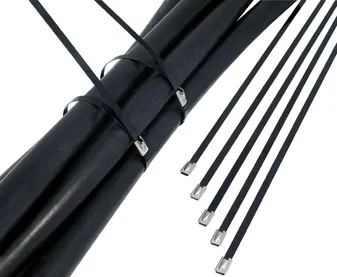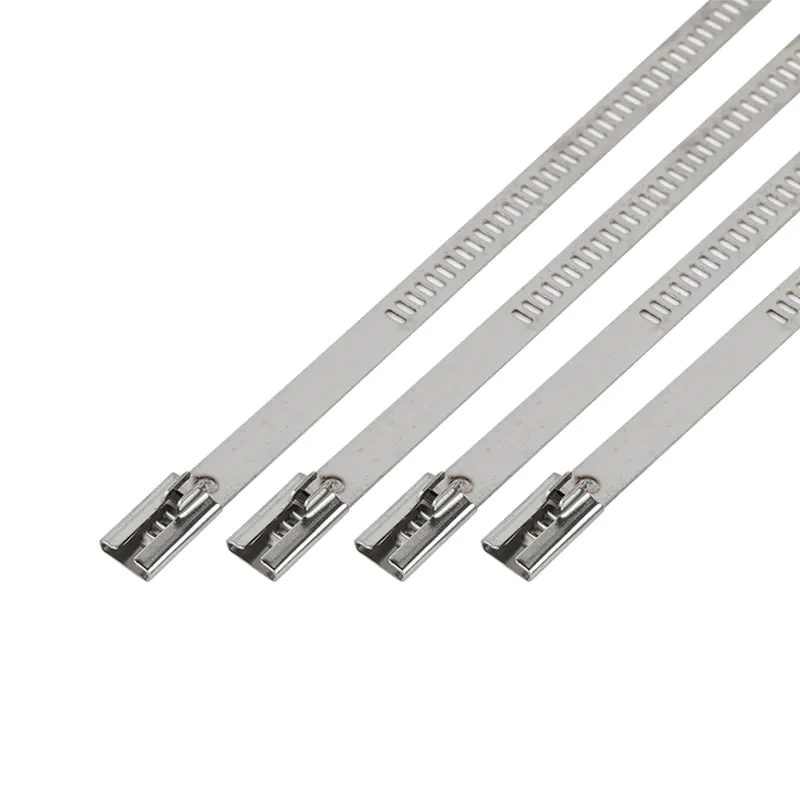Stainless Steel vs Nylon Cable Ties: Top 10 Advantages You Should Know (2025 Guide)
Introduction
Nylon cable ties (or zip ties) are everywhere—cheap, lightweight, and perfect for quick, light-duty jobs. But when your project faces extreme temperatures, moisture, heavy loads, or long-term exposure, nylon ties quickly fail—cracking, melting, or corroding over time.
That’s where stainless steel cable ties come in. Built for durability, strength, and resilience, they outperform nylon in nearly every demanding application. Below are the top 10 reasons why stainless steel cable ties are the superior choice.
1. Extreme Temperature Tolerance (No Cracking or Melting)
Nylon ties have a narrow working range—brittle below 32°F (0°C) and melting above 180°F (82°C)—making them unsuitable for outdoor winters or engine bays.
Stainless steel cable ties thrive in extreme conditions, performing reliably from -40°F (-40°C) up to 1000°F (538°C). Whether in freezers, automotive engines, or manufacturing kilns, they hold strong without cracking or melting.
2. Superior Tensile Strength (Handles Heavy Loads)
Nylon ties typically handle 20–50 lbs of tension before snapping—fine for small cable bundles but not for industrial tasks.
Stainless steel ties, however, offer 50–250+ lbs of tensile strength depending on grade and type. This makes them ideal for securing pipes, heavy cable runs, ducts, or machinery components where nylon simply can’t compete.
3. Unmatched Corrosion Resistance (Fights Rust, UV & Moisture)
Nylon degrades quickly when exposed to humidity, UV light, or saltwater, losing strength within a year or two outdoors.
Stainless steel—especially grades 304 and 316—naturally resists corrosion.
304 stainless steel handles most indoor and outdoor conditions.
316 stainless steel adds molybdenum for marine or coastal environments, resisting saltwater and harsh chemicals that destroy nylon ties.
4. Longer Lifespan (Lower Long-Term Costs)
While nylon ties last 1–3 years, stainless steel cable ties can perform for 10–20 years or longer.
Though stainless steel costs more upfront, its long service life and zero replacement needs make it a cost-effective long-term investment, especially in industrial or outdoor installations.
5. Tamper Resistance (Better Security for Critical Systems)
Nylon ties can be easily cut with scissors or knives—posing a risk in security systems, data centers, or electrical grids.
Stainless steel ties feature non-releasable locking mechanisms that require heavy-duty cutters for removal, preventing tampering or unauthorized access. Some versions even include identification tags for traceability.
6. Resistance to Physical Damage (No Tears or Abrasion)
Sharp edges, vibration, and rough surfaces quickly wear down nylon ties.
Stainless steel ties resist abrasion, impact, and vibration, making them ideal for use around metal pipes, rough surfaces, or moving machinery without risk of fraying or tearing.
7. Chemical and Solvent Resistance
In factories, auto shops, or chemical plants, nylon ties can weaken or dissolve when exposed to oils, solvents, or cleaning fluids.
Stainless steel—especially 316 grade—is immune to most industrial chemicals, oils, and detergents, ensuring reliable performance in harsh chemical environments.
8. Broader Application Range
Nylon ties are fine for indoor, light-duty, or temporary uses.
Stainless steel ties, on the other hand, excel across industries:
Marine: Securing boat wiring or offshore cables (316 grade).
Aerospace: Withstanding vibration and temperature swings.
Construction: Supporting HVAC ducts or rebar.
Automotive: Safe for engine compartments.
Outdoor Infrastructure: Perfect for solar panels and streetlight wiring.
No job is too tough for stainless steel.
9. Flexibility Without Brittle Breakage
Cold weather makes nylon stiff and fragile—bend it slightly and it snaps.
Stainless steel maintains flexibility even in subzero conditions, allowing it to wrap around irregular or bulky shapes without breaking. This flexibility is essential for complex or outdoor installations.
10. Low Maintenance (Set It and Forget It)
Nylon ties require frequent checks for cracking, fading, or loosening.
Stainless steel ties are “install and forget” solutions—once tightened, they stay secure for years. This minimizes maintenance costs, especially for hard-to-reach areas like ceiling ducts, power towers, or underground conduits.
Comparison Table: Stainless Steel vs Nylon Cable Ties
| Feature | Stainless Steel Cable Ties | Nylon Cable Ties |
| Temperature Range | -40°F to 1000°F (-40°C to 538°C) | 32°F to 180°F (0°C to 82°C) |
| Tensile Strength | Up to 250+ lbs | 20–50 lbs |
| Corrosion Resistance | Excellent (304/316 grades) | Poor (affected by moisture & UV) |
| Chemical Resistance | High | Low |
| Lifespan | 10–20+ years | 1–3 years |
| Tamper Resistance | High (requires special tools) | Low (easy to cut) |
| Maintenance | None required | Frequent replacements |
| Best For | Industrial, marine, high-temp, outdoor | Indoor, temporary, light-duty |
| Upfront Cost | Higher | Lower |
| Overall Value | ★★★★★ (Long-term reliability) | ★★☆☆☆ (Short lifespan) |
When to Use Each Type
| Scenario | Best Choice | Why |
| Organizing desk cables (indoor, light use) | Nylon | Cheap and easy to trim |
| Securing boat wiring (saltwater, outdoor) | 316 Stainless Steel | Superior corrosion resistance |
| Bundling engine bay wires (high heat) | Stainless Steel | Withstands extreme temperatures |
| Holding heavy industrial pipes (200+ lbs load) | Heavy-Duty Stainless Steel | Exceptional tensile strength |
| Temporary wiring setups | Nylon | Cost-effective for short-term use |
FAQ
Q1: Are stainless steel cable ties harder to install?
A: They’re slightly stiffer than nylon but still easy to use. Simply wrap, feed through the lock, and tighten. You’ll need a heavy-duty cutter to trim excess length.
Q2: Can I reuse stainless steel cable ties?
A: Yes—releasable stainless steel models allow reuse, while nylon versions usually break when released.
Q3: Is stainless steel overkill for small projects?
A: Not necessarily. For outdoor or long-term setups, stainless steel is worth it. For quick indoor use, nylon is fine.
Q4: Do stainless steel ties scratch delicate surfaces?
A: Choose PVC- or nylon-coated stainless steel ties to prevent scratches on polished or painted materials.
Final Thoughts
Nylon cable ties are great for quick, low-cost fixes—but they’re not built to last.
When strength, longevity, and resistance to harsh environments matter, stainless steel cable ties are your best option. Whether for marine, construction, automotive, or industrial use, they outperform nylon in every critical aspect.
If you’re tired of cracked, melted, or broken nylon ties, switch to stainless steel today—your projects, time, and budget will thank you.
Need Expert Help Choosing the Right Cable Tie?
We can help you select the perfect 304 or 316 stainless steel cable tie for your application.Contact our technical team to get started.





